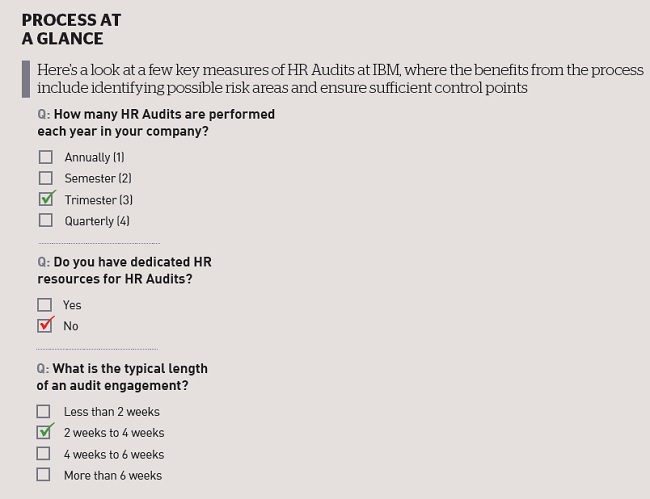How IBM leverages HR audits to enable efficiency

The goal is to find the right balance between re-engineering and record keeping while keeping in mind the need for efficiency
IBM, Audits, HR, Efficiency, Enabling
Audits are instrumental for three reasons: to ensure that there is no financial loss as a result of not following statues and laws, to ensure that there are sufficient control points, and to assess whether they are actually being followed, and the third reason is to identify possible risk areas. All of which call for proper functional compliance operations and reporting procedures.
The key challenge with audits has to do with demanding timelines. As an activity that adds to business-as-usual, it’s an exhausting exercise as far as process owners are concerned. And the turnaround time is usually one working day. The second problem has to do with the re-engineering exercise that follows audit recommendations. The goal is to find the right balance between re-engineering and record keeping while keeping in mind the need for efficiency. Sometimes, the audit committee might recommend additional steps that might increase process efficiency or it could interfere with it. So, the net effect should not end up weakening a process or impacting employee experience.
At IBM, there are broadly three levels of audit: one is a peer audit, where one team within HR audits another. The second is a corporate audit – which is conducted by an external team but within IBM. The third level has to do with the statutory audit that is conducted by a team outside IBM. In addition to this, there is an operational excellence and reporting team within HR which looks at the life-cycle of an employee – from recruitment to separation. In between, there is compensation and benefits, payroll, employee disbursements. Six years ago, the audit team recognized a risk in managing data – especially in the background verification process. The challenge then was that there were no experienced agencies and recruitment agencies took it up as part of their process. A year and a half later, the market responded to the demand and now there are over 300 background agencies in India.
Employee Referral
An example of HR audit recommendation is based on our referral policy change. Before the audit, the policy required that the employee refers an individual who is “known personally or professionally” to the employee. The recommendation from the audit required us to enhance or revise the language since it was difficult to validate whether an employee actually knew the referee in person. This also had a direct impact on the employee referral bonus program. So, the policy was changed and given a broader definition, whereby a candidate needed to be a person “known through personal or professional network or indirectly known through a network”. The result of this exercise was closing a possible business risk that rose from an unclear definition. There was also an increase in referrals following a slew of measures that were taken to increase employee referrals in addition to the change in definition. The result of the HR audits apart from identifying risk and improving process efficiencies has helped in shaping our policies, making them detailed as well as specific.











